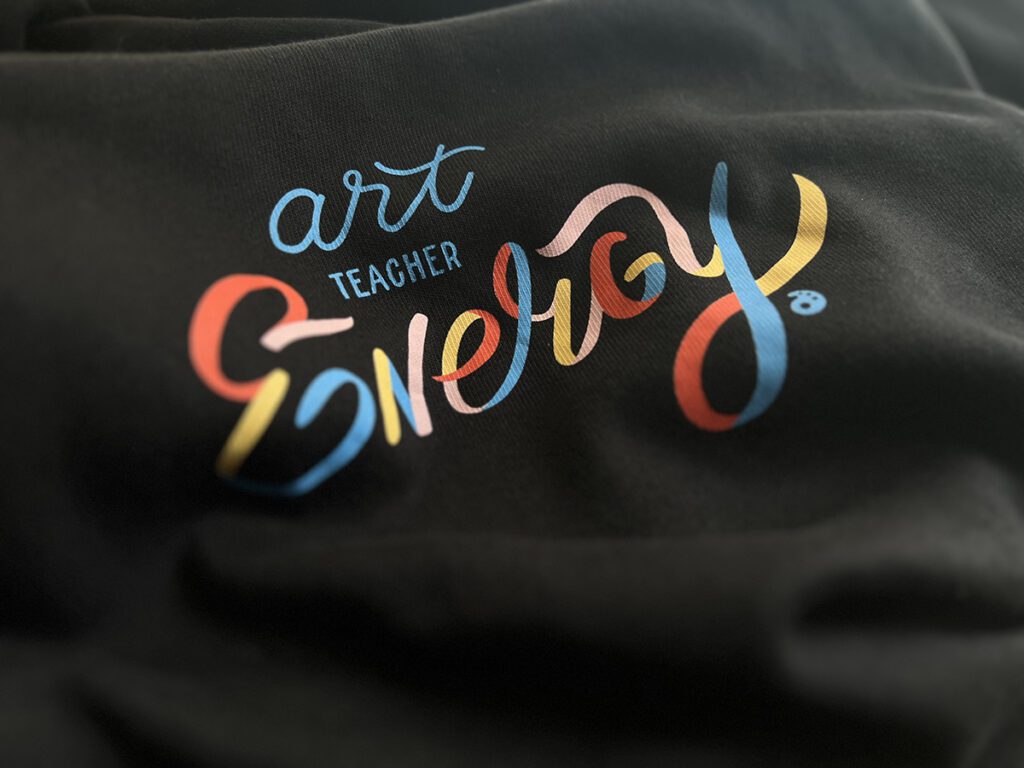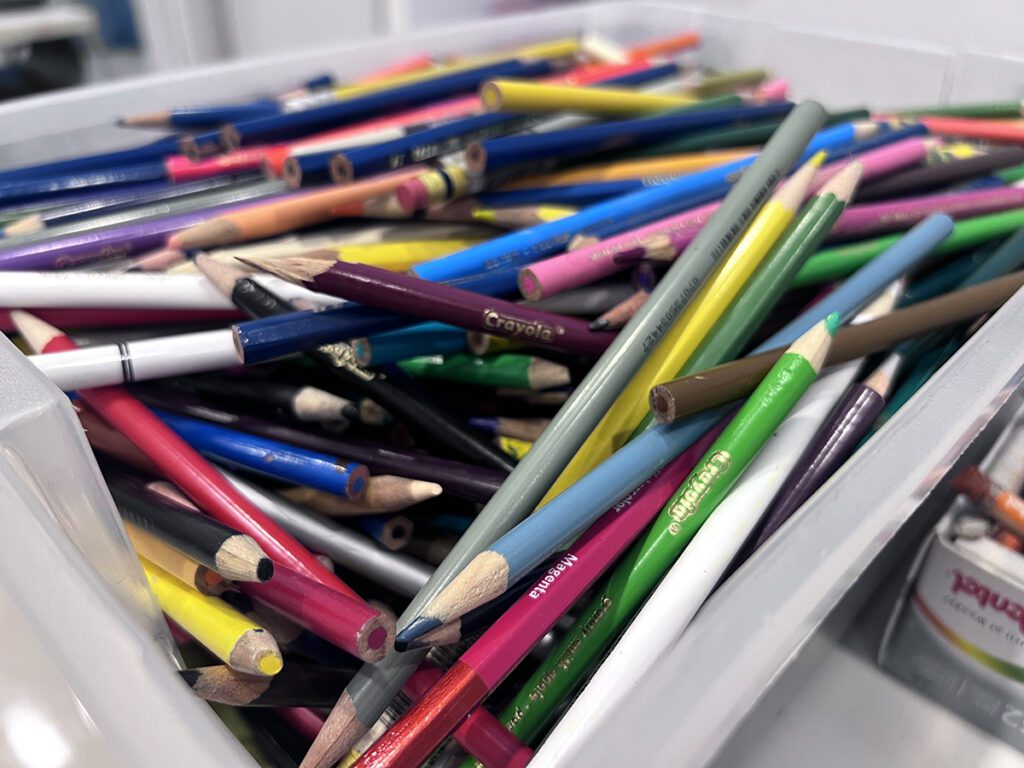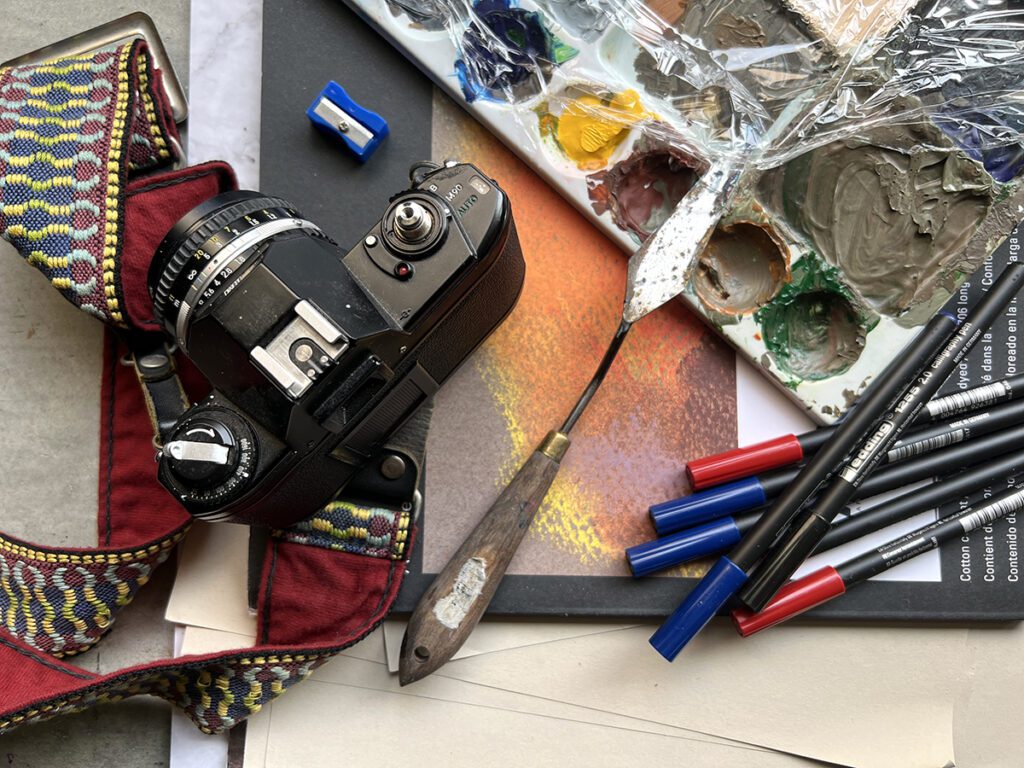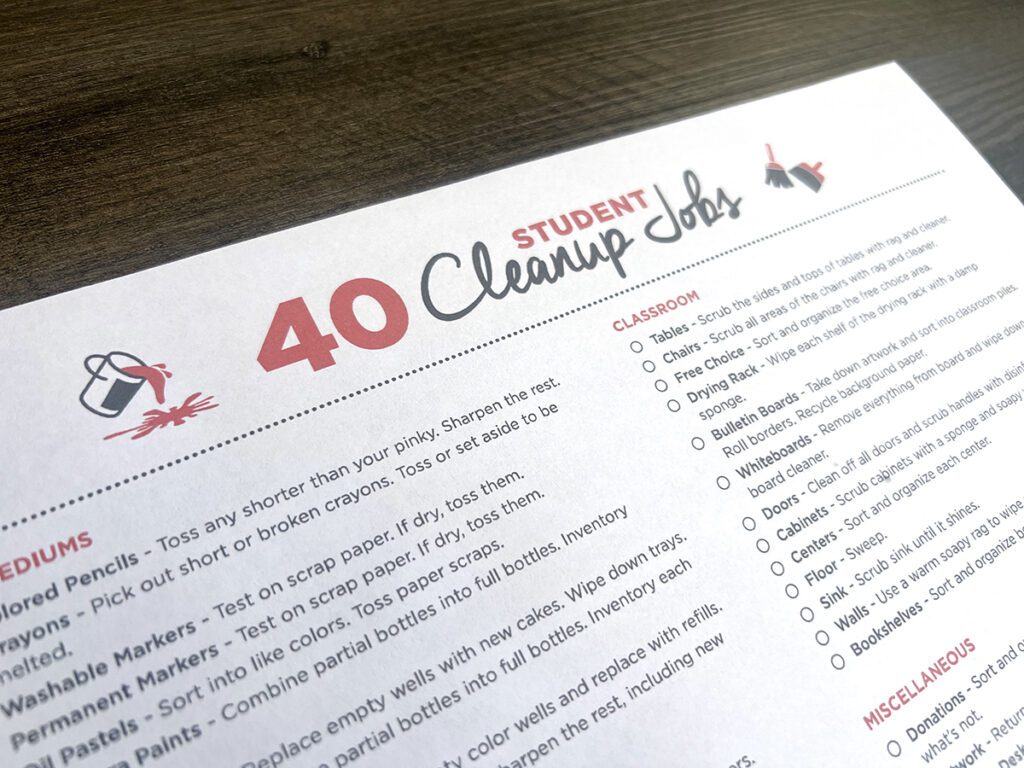Sometimes, our art teacher job feels like we are juggling a million and one things at a time—especially when we have multiple preps on our schedule. Many elementary art teachers have multiple classes per grade level with little to no time in between classes. At the secondary level, it’s common to have various advanced courses stacked in the same class period to provide options for the students.
If this sounds familiar, the first step is to check your contract for how many preps you are obligated to teach. If you would like to teach above what’s required, that’s great! If not, schedule a time to chat with your administrator and department chair to come up with a solution that works for everyone. The best thing you can do as an art teacher is to ensure you are taking care of yourself and your course load. This will allow you to show up well for your students each day!
Learn how to juggle and streamline your preps with finesse for more efficient use of your precious time!

1. Keep it simple.
The sparkly lessons we see online or on our favorite art teacher influencer’s page are enticing! However, there may be ideas that will be a better fit for your classes. Don’t compare and overwork yourself to match the lessons you see on social media. As long as you meet the required standards and objectives, keeping your lessons and prep simple is okay!
2. Implement transition activities.
Bell ringers or exit tickets are great ways to transition your students from one activity to another. When students know the routine for entering or exiting the classroom, it gives you more time to greet, prepare, or finish any last details. Bell ringer activities can include a quick exercise listed on the board, a drawing prompt, grabbing supplies, or getting portfolios. At the end of class, students can reflect on their learning, ask clarifying questions, clean up, or set up the materials and tables for the next class.
3. Incorporate centers or stations.
For those long days when you lose your prep time to cover a class or are just really busy getting ready for back-to-school night or your art show, set up centers or stations! They are also great when you need a last-minute activity for a substitute teacher. Provide students with readily available supplies, like markers, pencils, and paper, along with a prompt or instruction sheet. Set these up in copy paper box lids at the beginning of the year so they’re ready to go when you’re short on time.

4. Teach students how to self-assess.
If all art teachers can agree on one task in the art room that takes up a lot of time, it would be assessment! When students self-assess, grading multiple projects and requirements at the same time is totally manageable. Plus, it reinforces introspection and communication. Try reflection journals, rubrics, and artist statements.
Remember, not everything needs to be “officially” graded! Quick checks for understanding can be an easy grade if you walk around with a clipboard or your laptop. Have students flag their best five sketchbook pages for you to grade so you don’t have to flip through hundreds of books. At the end of a one-day lesson, stand next to a display board or long piece of bulletin board paper. Show students how to mount and display their work. Double-check and immediately input students’ self-assessments while they hang their work to be as efficient as possible! For more ways to streamline grading, watch the video below.
5. Use similar supplies for all classes.
Using similar supplies across different grades and classes with minor modifications can simplify your prep. This approach reduces the need for vastly different types of materials and makes it easier to manage your inventory. See how Sarah Krajewski does a clay week and a fibers week with all of her grade levels. In elementary, focus on one medium and break it down into different project ideas for each grade level. If you have stacked classes at the high school level, select one medium for the whole class period and set varying requirements for each course or group of students.
6. Stagger long projects and deadlines.
Before you jump into a unit and assign due dates, take a few minutes to check your calendar. Space out all of your project deadlines, take into account events on the school calendar, and give yourself ample time to get grades in at the end of the quarter. If you’re teaching the same lesson to multiple levels or classes, stagger your start date so you can focus on one grade or course at a time.
7. Balance teacher and student-led options.
Offer both teacher and student-led options to cut your prep time in half. For instance, teach a lesson about an artist. Introduce the artist, examine and discuss their artwork, and explore the cultural context or associated art movement. Provide two projects inspired by the artist for the students to apply their learning. One will be a teacher-led project where you scaffold clear steps with a new technique, process, or medium. The other will be a student-led project (with your pre-determined requirements) where students put their own twist on an artwork or record their process in a visual journal.

8. Collaborate with colleagues.
Share lesson plans, resources, and ideas with others to lighten the load. If you work in a school with other teachers who teach the same course, share lesson plans, or take turns generating lessons and resources. If you don’t have other art teachers in your school, reach out to art teachers in your district or online for similar partnerships. Collaboration can bring fresh ideas and reduce the burden of planning everything yourself.
9. Download reusable resources.
Take some time now to start a digital organization system to archive lesson plans, student work, and resources. That way, when you need something, you’ll be able to quickly find it! Add pre-made resources so you don’t need to reinvent the wheel. If you need help figuring out where to start, FLEX Curriculum offers a robust library of standards-aligned lesson plans and classroom-ready, student-facing resources and assessments. Lesson plans like Visual Storytelling are great to tailor to multiple preps. Follow AOEU on social media so you don’t miss future complimentary downloads on the Magazine, too!
10. Assign jobs to student helpers.
Double your efficiency by delegating tasks. Assign responsible students to help you with routine tasks such as preparing paint, passing out paper, or sharpening pencils. Not only are you promoting student responsibility, but you are gaining precious minutes to manage other students or take a breather. Sometimes, we need to remember our best helpers are right in front of us. Many students love to organize and help!

In a perfect world, art teachers will always have the capacity during the time given to get their pinch pots in a row. In reality, many art teachers juggle multiple preps in one schedule, whether that’s many classes per grade level or stacked courses in one room at the same time. Fortunately, there are many small things you can do to make your year and workload as streamlined and efficient as possible. Get started by keeping things simple, collaborating with other art teachers, and harnessing helpers. Adopt some of the tips above so you can breathe easier and stress less!
What’s your go-to tip for staying organized with lots of classes and courses?
How do you streamline your workload with multiple preps?
Magazine articles and podcasts are opinions of professional education contributors and do not necessarily represent the position of the Art of Education University (AOEU) or its academic offerings. Contributors use terms in the way they are most often talked about in the scope of their educational experiences.





